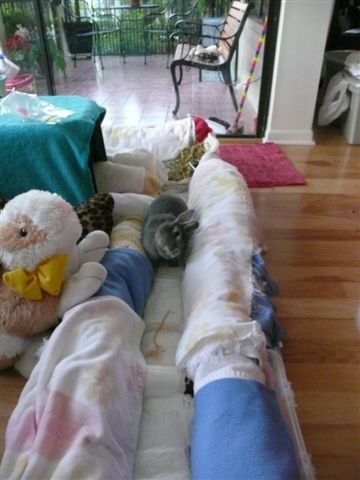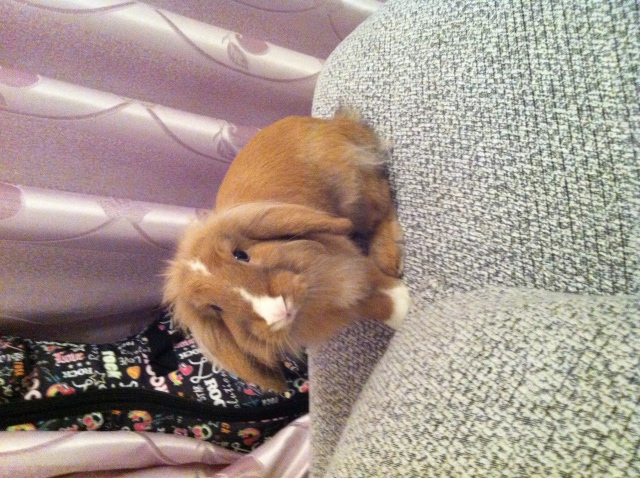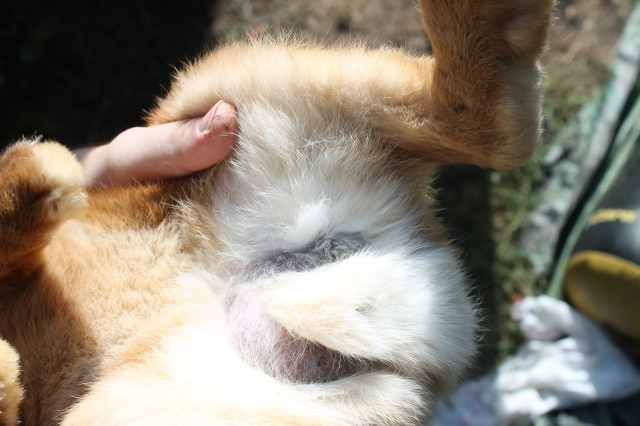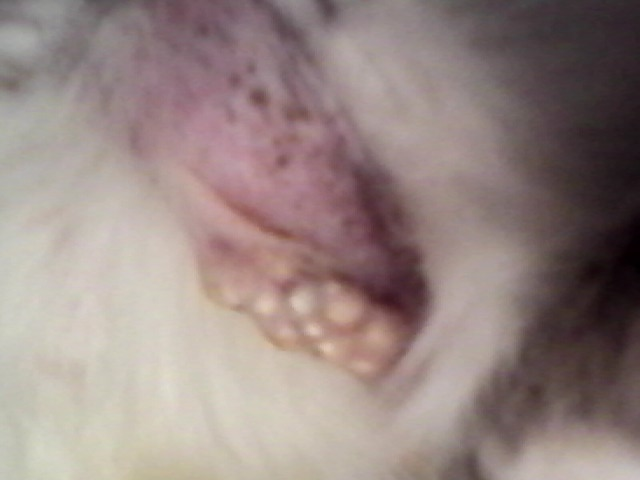QuestionQUESTION: I have 2 does aged 4 and a half months, from seperate litters but bought together from the same breeder and kept together from the age of 9 weeks. They are a rex and a dwarf lop. They lived in beautiful harmony until 2 days ago when the dwarf lop started asserting dominance by chasing, circling, biting and now mounting(!!)the rex. The rex is being quite submissive running away stamping her feet or just staying still while she is mounted or pawed. The rex still licks the lop and the lop occasionally does the same. However I now have to separate them at night and when I am out. By the way, they live inside in a cage and have exercise both outside and around the house. I have been removing the rabbits in rotation to a smaller cage alongside the main one but I am worried that separating them might just prolong the process if the lop needs to reassert herself every time they re-meet! It is so sad as they were so happy til (clearly) puberty hit! Will spaying the lop fix the problem or could it continue or transfer to the rex. I am loathe to spay the rex as I may decide to breed with her (with a buck from the original breeder - who is highly reputable and highly regarded)next year. In the meantime though I wanted them to both be indoor bunnies but we really don't have room for two cages in our small house. Most important though is that they are safe and happy as they were previously. Please help!!!
ANSWER: hi,
you need to separate them, they are reaching sexual maturity. Especially if they are not fixed, if your the rex hits sexal maturity and doesn't back down you'll have actual fighting and vet bills from that.
A second cage is less expensive and safer and they will be able to live a better life while not fixed.
I urge you to get them fixed. First the fact everywhere we are running surpluses of perfectly fine rabbits that people abandon or give up at shelters and wind up being put down. Second your girls will live twice as long fixed, most female rabbits develop uterine cancer by age 5-6 and die from it (over 80 percent). It can develop anytime during sexual maturity onwards because of their high hormone levels. Third it will make them much better indoor house rabbits with more stable behavior and litterpan habits.
The key is having a good rabbit vet do this procedure. Not all vets are. If you need to find a good rabbit vet near you start here:
www.rabbit.org/vets/vets.html
to find a House Rabbit Society recommended vet.
---------- FOLLOW-UP ----------
QUESTION: Thanks for that. Just to clarify, in your opinion, if both does are spayed might they still need to be separated? We would eventually spay them both anyway, but will only rush to do so if we can have them living together again
Thanks
AnswerHi,
if they got along before sexual maturity, there's a good chance they will be able to get along after spaying. Before sexual maturity hormones played little role in their getting along, and hopefully even though, spayed, they will have more hormones than before maturity, because a couple other organs produce hormones, being fixed, their own personalities will not be overwhelmed by massive amounts of hormones. They will be able to be friends more of their own choice rather that be raging friends or raging enemies because their hormones make them.
I would not rush it, both need to hit sexual maturity. It isn't the end of the world separating them now anyway for a little while, they will have to be re-bonded no matter what, as they have to be kept separate for 4-6 weeks after they are spayed so that their new lower hormone levels stabilize. They have to stabilize before re-bonding.
So if only one appears to be acting different, the other one may not have hit sexual maturity yet. By six months they both should be however. The vet will not want to spay them until they are mature, and gives them a wellness checkup to make sure they are not sick before attempting surgery.
Probably would be good to get them spayed either same day or real close together so that their separation periods can be minimized.

 Meds for E.Cuniculi
QuestionJazzy
QUESTION: Hello Dr. Krempels,
Som
Meds for E.Cuniculi
QuestionJazzy
QUESTION: Hello Dr. Krempels,
Som
 My rabbits diet
QuestionChocolate
QUESTION: Hi cat.. I have a mi
My rabbits diet
QuestionChocolate
QUESTION: Hi cat.. I have a mi
 swollen testicle
Question
rabbit testicle
My rabbit has a swollen
swollen testicle
Question
rabbit testicle
My rabbit has a swollen
 Scrotal Bumps
QuestionQUESTION: Dear Dr. Krempels,
i was just holdin
Scrotal Bumps
QuestionQUESTION: Dear Dr. Krempels,
i was just holdin
 Rabbit sneezing and very aggressive
Question
Henry
Hello. I am a first time rabbit owner an
Rabbit sneezing and very aggressive
Question
Henry
Hello. I am a first time rabbit owner an